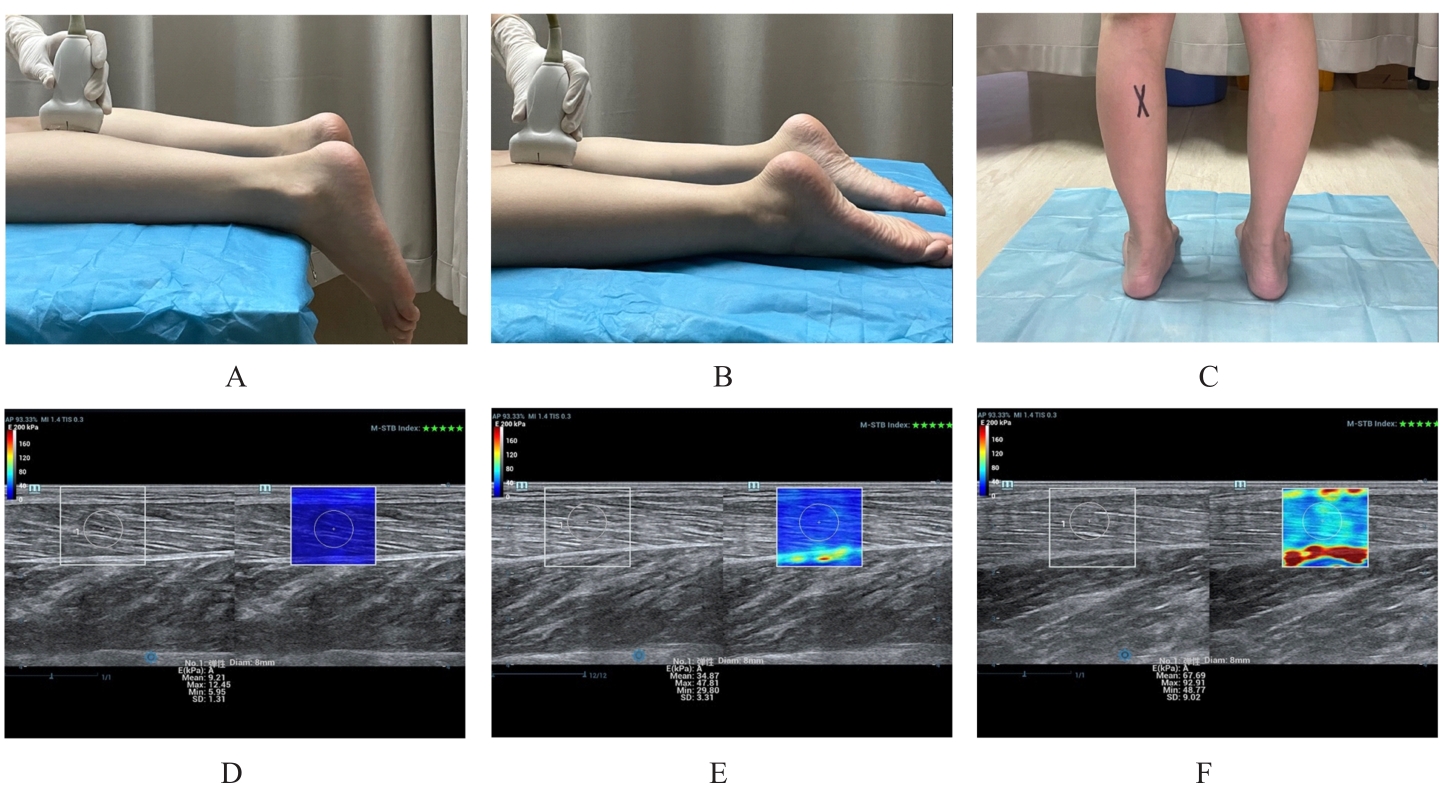吉林大学学报(医学版) ›› 2024, Vol. 50 ›› Issue (2): 451-456.doi: 10.13481/j.1671-587X.20240218
• 临床研究 • 上一篇
超声剪切波弹性成像技术检测糖尿病患者不同功能状态下腓肠肌硬度及其临床意义
- 1.成都中医药大学医学与生命科学学院,四川 成都 611137
2.成都中医药大学附属医院 超声医学科,四川 成都 610075
Detection of gastrocnemius muscle hardness of diabetic patients under different functional states by ultrasonic shear wave elastography and its clinical significance
Xue FANG1,2,Yu KANG2( ),Xiaoxi SHA2,Zhifen HAN2,Yan ZHANG2
),Xiaoxi SHA2,Zhifen HAN2,Yan ZHANG2
- 1.School of Medical and Life Sciences,Chengdu University of Traditional Chinese Medicine,Chengdu 611137,China
2.Department of Ultrasound Medicine,Affiliated Hospital,Chengdu University of Traditional Chinese Medicine,Chengdu 610075,China
摘要:
目的 应用超声剪切波弹性成像(SWE)技术检测2型糖尿病患者不同功能状态下腓肠肌的硬度,为临床早期发现骨骼肌损害提供客观化评价依据。 方法 选取70例2型糖尿病患者作为糖尿病组,以70名健康体检者作为对照组。应用SWE技术分别测量2组研究对象腓肠肌在踝关节自然位松弛状态、踝关节跖屈位等张收缩状态和直立位等长收缩状态下的杨氏模量(E)值,并采用体质量指数(BMI)对E值进行标准化(EBMI=E/BMI),比较2组研究对象腓肠肌不同状态下被动硬度和主动硬度的差异,采用Person相关性分析糖尿病患者E值与患者年龄、病程、糖化血红蛋白(HbA1c)水平和糖基化终产物(AGEs)水平的相关性。 结果 2组研究对象腓肠肌在踝关节自然位被动硬度E值和EBMI值比较差异无统计学意义(P>0.05);踝关节跖屈位主动硬度E值比较差异无统计学意义(P>0.05),糖尿病组患者EBMI值组低于对照组(P<0.01);糖尿病组患者直立位主动硬度E值和EBMI值均低于对照组(P<0.01)。糖尿病组患者腓肠肌主动硬度E值与患者病程、HbA1c水平和AGE水平呈负相关关系(r=-0.645,P<0.05;r=-0.741,P<0.05;r=-0.675,P<0.05),与患者年龄无相关性(r=-0.116,P>0.05)。 结论 2型糖尿病患者存在腓肠肌主动硬度减低,被动硬度早期可能不受影响;采用超声SWE技术在直立位等长收缩状态下检测腓肠肌主动硬度有助于发现2型糖尿病患者亚临床阶段肌肉收缩功能减退。
中图分类号:
- R445.1


